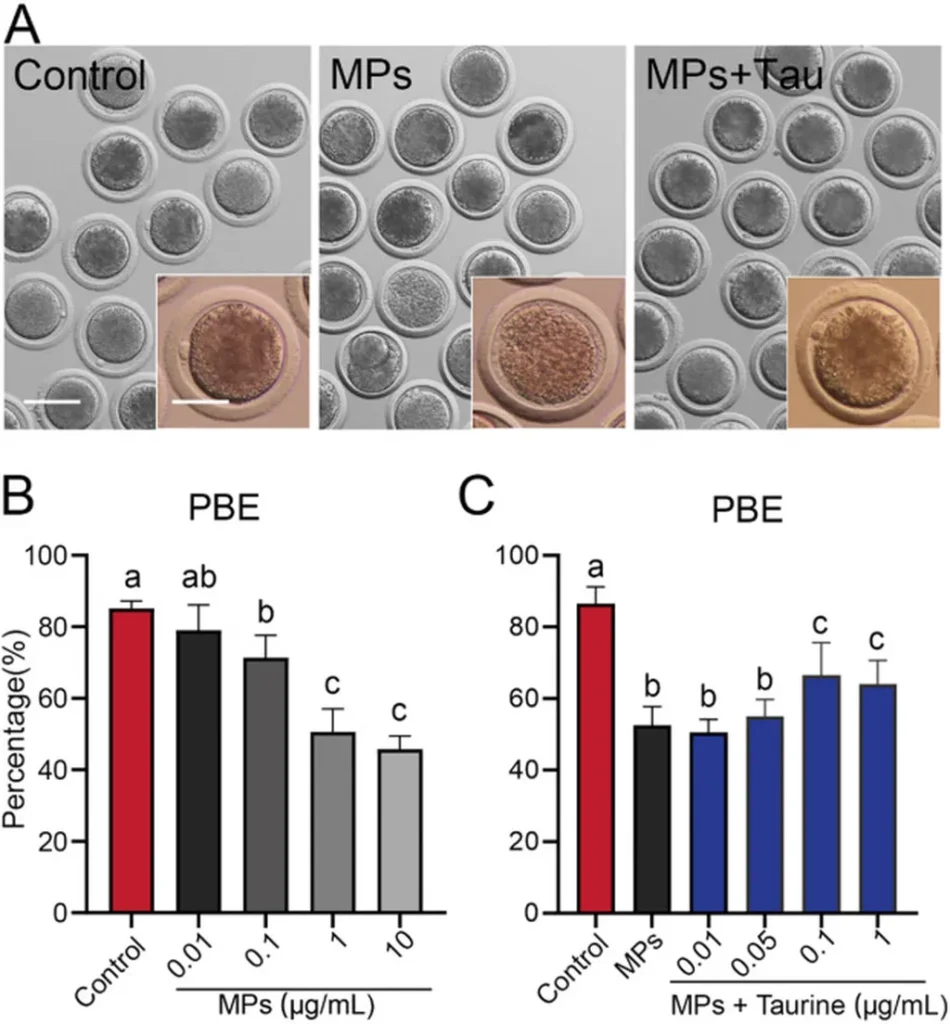In an era where plastic pollution is ubiquitous, a groundbreaking study has shed light on the insidious effects of microplastics (MP) on bovine reproduction, offering a glimmer of hope through an unexpected ally: taurine. Published in the *Journal of Dairy Science* (translated as *Journal of Dairy Research*), this research, led by Zhaokang Cui from the Institute of Animal Science at the Jiangsu Academy of Agricultural Sciences, delves into the reproductive toxicity of microplastics on bovine oocytes and the potential restorative effects of taurine.
Microplastics, tiny fragments of plastic less than five millimeters in size, have been a growing concern due to their pervasive presence in the environment. While previous studies have focused on their impact on male reproduction, the effects on female reproduction have remained largely unexplored—until now. Cui and his team set out to investigate how microplastics influence bovine oocyte maturation and subsequent embryonic development.
Using advanced techniques such as immunofluorescence staining and single-cell transcriptome sequencing, the researchers discovered that microplastics disrupt critical processes within bovine oocytes. “Microplastics interfere with spindle organization, chromosome alignment, and actin assembly, leading to failed maturation of bovine oocytes,” Cui explained. This disruption extends to the abnormal expression and localization of cortical granules, indicating a failure in cytoplasmic maturation. Consequently, embryonic development is compromised, posing significant challenges for the agricultural sector.
The study further revealed that microplastics induce changes in the expression of mitochondrial-related genes, highlighting the role of mitochondrial dysfunction in mediating the toxic effects of microplastics. “Microplastics cause oxidative stress, DNA damage, and apoptosis, all of which contribute to the failure of oocyte maturation and embryo development,” Cui noted. This finding underscores the profound impact of microplastics on cellular health and reproductive success.
However, the research also offers a promising solution. Taurine, an amino acid known for its antioxidant properties, was found to stabilize cellular antioxidant levels and inhibit mitochondrial dysfunction. “Taurine can reverse the failure of oocyte maturation and embryo development following microplastics exposure,” Cui stated. This discovery opens new avenues for mitigating the reproductive toxicity of microplastics in livestock, potentially enhancing agricultural productivity and sustainability.
The implications of this research extend beyond the immediate scope of bovine reproduction. As the agricultural sector grapples with the environmental impacts of microplastics, understanding their effects on livestock reproduction is crucial. The findings suggest that taurine supplementation could be a viable strategy to counteract the adverse effects of microplastics, thereby safeguarding livestock health and productivity.
Moreover, this study highlights the importance of interdisciplinary research in addressing complex environmental challenges. By combining advanced molecular techniques with agricultural science, researchers can uncover novel solutions to pressing issues in the energy and agricultural sectors. As Cui and his team continue to explore the reproductive toxicity of microplastics and the restorative effects of taurine, their work paves the way for innovative approaches to sustainable agriculture and environmental conservation.
In a world increasingly aware of the environmental consequences of plastic pollution, this research offers a beacon of hope. By elucidating the mechanisms underlying microplastic toxicity and identifying potential interventions, scientists are taking crucial steps toward protecting both the environment and the agricultural systems that depend on it. As the findings from this study are further explored and applied, they have the potential to shape the future of livestock reproduction and agricultural sustainability, ensuring a healthier and more resilient food system for generations to come.

